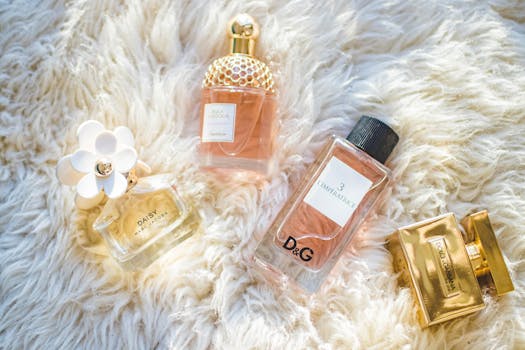Creating Your Own Personalized Perfume: A Guide to Mixing Essential Oils
In a world where individuality is celebrated, creating your own personalized perfume can be a fulfilling and creative endeavor. By mixing pure essential oils with an alcohol base or carrier oil, you can craft a scent that reflects your personality and preferences. This article will guide you through the process, providing insights into essential oils, blending techniques, and tips for achieving the perfect fragrance.
Understanding Essential Oils
Essential oils are concentrated plant extracts that capture the natural fragrance and therapeutic properties of the source material. They are derived from various parts of plants, including flowers, leaves, bark, and roots. Here are some popular essential oils used in perfumery:
- Lavender: Known for its calming properties, lavender adds a floral and herbaceous note.
- Rose: A classic choice, rose oil provides a rich, romantic scent.
- Citrus Oils (e.g., Lemon, Orange): These oils offer fresh, uplifting notes that can brighten any blend.
- Sandalwood: With its warm, woody aroma, sandalwood serves as a grounding base note.
- Peppermint: This invigorating oil adds a refreshing twist to any fragrance.
Choosing Your Base: Alcohol vs. Carrier Oil
When creating your personalized perfume, the choice of base is crucial. You can opt for either an alcohol base or a carrier oil, each offering distinct advantages.
Alcohol Base
Using an alcohol base, such as perfumer’s alcohol or vodka, allows for a lighter, more volatile scent that evaporates quickly, leaving a lingering aroma. Here are some benefits:
- Long-lasting scent: Alcohol helps the fragrance to last longer on the skin.
- Quick drying: Alcohol-based perfumes dry quickly, making them convenient for on-the-go application.
- Versatility: Alcohol can blend well with a wide range of essential oils.
Carrier Oil
Carrier oils, such as jojoba or sweet almond oil, provide a more moisturizing option. They are ideal for those with sensitive skin or who prefer a subtler scent. Benefits include:
- Skin-friendly: Carrier oils are gentle on the skin and can provide additional hydration.
- Longer-lasting scent: The scent may last longer on the skin due to the oil’s slower evaporation rate.
- Rich texture: Carrier oils can add a luxurious feel to your perfume.
Blending Your Perfume
Once you’ve selected your essential oils and base, it’s time to start blending. Here’s a simple step-by-step guide:
- Gather Your Materials: You will need essential oils, your chosen base (alcohol or carrier oil), a small glass bottle, and a dropper.
- Choose Your Scent Profile: Decide on the type of fragrance you want—floral, citrus, woody, or spicy. A balanced perfume typically includes top, middle, and base notes.
- Start with Base Notes: Add 10-15 drops of your chosen base notes (e.g., sandalwood, vanilla) to the bottle.
- Add Middle Notes: Incorporate 15-20 drops of middle notes (e.g., lavender, rose) to create depth.
- Finish with Top Notes: Finally, add 10-15 drops of top notes (e.g., lemon, peppermint) for a fresh opening.
- Mix and Test: Shake the bottle gently and let it sit for 48 hours. Test the scent and adjust as necessary.
Case Studies: Successful Personalized Perfumes
Many individuals and brands have successfully created personalized perfumes that resonate with their audience. For instance, the brand Jo Malone is known for its customizable fragrance experiences, allowing customers to layer scents to create a unique signature. Similarly, Le Labo offers personalized labels on their fragrances, enhancing the customer experience.
Statistics show that the global fragrance market is projected to reach $64 billion by 2025, indicating a growing interest in personalized and niche fragrances. This trend highlights the potential for individuals to explore their creativity in scent-making.
Conclusion: Crafting Your Unique Scent
Creating your own personalized perfume by mixing essential oils with an alcohol base or carrier oil is not only a fun and creative process but also a way to express your individuality. By understanding the properties of essential oils, choosing the right base, and mastering the blending process, you can craft a fragrance that is uniquely yours. Whether you prefer a light, refreshing scent or a deep, complex aroma, the possibilities are endless. So gather your materials, unleash your creativity, and embark on the journey of scent-making!
